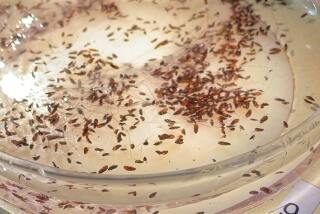Aaah-choo! : Sneezin’ Season Gets Simple Rx: Take 2 Aspirin, Wait for Spring
- Share via
As surely as New Year’s Day follows Christmas, the flu is following New Year’s Day again in Orange County.
More precisely, the malady is caused by one or more “flu-like” viruses that have not yet been identified as influenza organisms, according to Dr. Thomas J. Prendergast, chief of epidemiology and disease control for the county.
“We don’t know what kind of virus it is,” Prendergast said Monday. “We have some specimens we’re hoping to get. Virus cultures are expensive to run, so most cases are never cultured. Probably, this isn’t influenza.”
The distinction means little to the those who suffer from the fever, headache, cough, respiratory congestion and, occasionally, gastrointestinal upset.
Prendergast said the infections have come to county health officials’ attention only within the last week or so, since a few convalescent homes have reported respiratory infections and a few doctors have called “just to say they’ve been seeing a lot of cases.”
Individual Cases Seldom Reported
Prendergast said the severity of the illness is “somewhere between a danger and an annoyance. Even in convalescent homes, there’s been little need for hospitalization. We have heard of no deaths. For otherwise healthy people, it’s not likely to be very dangerous.”
He said there is virtually no way yet to know how widespread the infections are. Individual cases are seldom reported, he said.
“We just don’t know why these (viral infections) crop up in the winter, but they do--universally, over the world. In the Southern Hemisphere, it happens during their winter, which is our summer.”
He said there are probably between 250 and 300 types of virus that can cause respiratory illness, and many of them could account for this year’s specific symptoms.
Antibiotics are useless, although they are sometimes prescribed to prevent secondary bacterial infections, Prendergast said.
So what can the sufferer do?
“The standard things: ‘Take two aspirin and call me in the morning.’ ” Prendergast said. “Take fluids--aspirin for fever and pain--and avoid things that make you feel bad.”
Some have reported recovery in two or three days, “but others have said they had the infection two to three weeks ago and are still having trouble shaking it off,” Prendergast said. Patients need patience--to simply wait until they get better, he said.
“Based on past performance, this (outbreak) can last three to six weeks or so, Prendergast said. “We’ll probably work our way through it by the end of February.”
More to Read
Sign up for Essential California
The most important California stories and recommendations in your inbox every morning.
You may occasionally receive promotional content from the Los Angeles Times.













